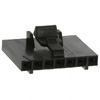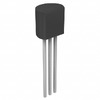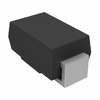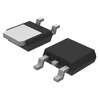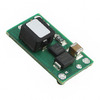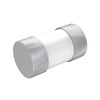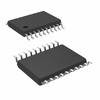Understanding the LM2907 Key Features and Uses
The LM2907 is a versatile frequency-to-voltage converter widely used in applications that demand precise signal processing, such as automotive speed sensing and industrial machinery monitoring. Its specially designed pin configuration enhances both performance and ease of integration, making it a reliable choice for you. This article digs into the practical aspects of using the LM2907, from connecting it correctly for optimal voltage stability to ensuring protection against noise interference. Whether in automotive systems or consumer electronics, the LM2907 stands out for its adaptability and efficiency.Catalog
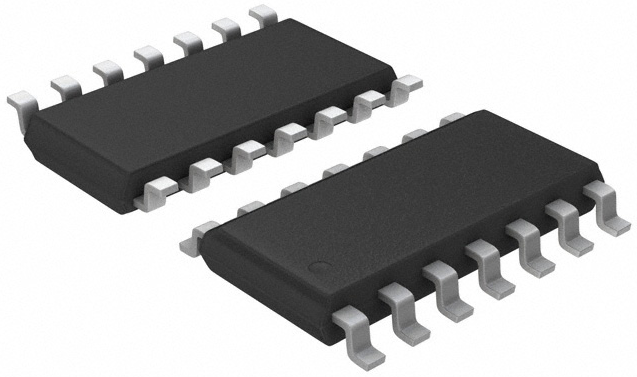
LM2907 Detailed Analysis
The LM2907 is a notable member of a versatile family of frequency-to-voltage converters. It utilizes a high-gain operational amplifier/comparator, exhibiting a refined ability to activate relays, lights, or other actuators once the input frequency exceeds a predetermined threshold. The incorporation of advanced charge pump technology allows it to double the frequency while maintaining minimal ripple, which is a distinguishing feature. This frequency doubling is principally advantageous in scenarios demanding high signal fidelity, such as in automotive diagnostics and industrial automation.
The LM2907-8 and LM2917-8 variants are equipped with extensive input protection features. These safeguards prevent overvoltage and mitigate electrical noise, ensuring their reliable operation even in the most demanding environments. Both models come with a floating transistor output that pairs well with tachometers. The design supports currents up to 50 mA and can handle a maximum voltage (VCE) of 28V. These features have demonstrated their reliability in applications necessitating steadfast and unwavering performance, such as in automotive engines and heavy machinery.
The LM2907 family offers two distinct configurations. The 8-pin version is specially designed for single-speed sensors and basic buffered frequency-to-voltage conversions. This straightforward configuration serves as an ideal solution for applications requiring limited signal processing, making it invaluable in systems where space and simplicity are dominant, like consumer electronics and basic RPM sensing.
LM2907 Pin Configuration

CAD Model of LM2907
LM2907 Symbol
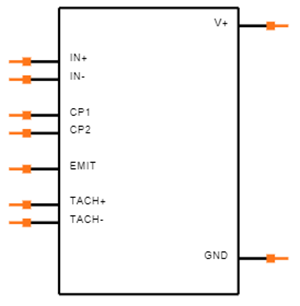
LM2907 Footprint

LM2907 3D Model

Key Features of the LM2907
|
Feature |
Description |
|
Direct ground reference tachometer input interface |
Provides a direct connection to ground for tachometer
inputs. |
|
Variable reluctance sensor compatibility |
Supports variable reluctance sensors for detecting
rotational speed. |
|
Operational amplifier/comparator with floating transistor
output |
Includes an operational amplifier/comparator with a
transistor output that is not tied to ground, allowing more flexible circuit
designs. |
|
50 mA receiver or power supply |
Can drive receivers, relays, solenoids, meters, or LEDs
with up to 50 mA current while maintaining low-ripple frequency multiplier
behavior. |
|
Tachometer with built-in hysteresis |
The built-in hysteresis helps stabilize readings by
minimizing oscillations in differential or ground reference input setups. |
|
Built-in Zener LM2917 |
Features a Zener diode, improving voltage regulation and
protection, enhancing the overall reliability of the device. |
|
0.3% typical linearity |
Provides high accuracy in frequency-to-voltage conversion
with a typical linearity of 0.3%. |
|
Ground reference protection |
Fully protects ground reference tachometer inputs from
damage caused by voltage swings that exceed VCC or drop below ground
potential. |
LM2907 Technical Specifications
Here is the table with the technical specifications, attributes, and parameters of the Texas Instruments LM2907M.
|
Type |
Parameter |
|
Lifecycle Status |
NRND (Last Updated: 5 days ago) |
|
Mounting Type |
Surface Mount |
|
Package / Case |
14-SOIC (0.154, 3.90mm Width) |
|
Surface Mount |
Yes |
|
Number of Pins |
14 |
|
Packaging |
Tube |
|
JESD-609 Code |
e0 |
|
Part Status |
Not For New Designs |
|
Moisture Sensitivity Level (MSL) |
1 (Unlimited) |
|
Number of Terminations |
14 |
|
ECCN Code |
EAR99 |
|
Type |
Frequency to Voltage Converter |
|
Terminal Finish |
Tin/Lead (Sn/Pb) |
|
Max Operating Temperature |
85°C |
|
Min Operating Temperature |
-40°C |
|
HTS Code |
8542.39.00.01 |
|
Terminal Position |
Dual |
|
Terminal Form |
Gull Wing |
|
Peak Reflow Temperature |
235°C |
|
Number of Functions |
1 |
|
Supply Voltage |
12V |
|
Terminal Pitch |
1.27mm |
|
Frequency |
10kHz |
|
Base Part Number |
LM2907 |
|
Pin Count |
14 |
|
Temperature Grade |
Industrial |
|
Max Supply Voltage |
28V |
|
Min Supply Voltage |
12V |
|
Linearity |
±0.3% |
|
Positive Input Voltage-Max |
10.5V |
|
Height |
1.75mm |
|
Length |
8.65mm |
|
Width |
3.91mm |
|
Thickness |
1.58mm |
|
Radiation Hardening |
No |
|
RoHS Status |
Non-RoHS Compliant |
|
Lead Free |
Contains Lead |
LM2907 Layout Guidelines

Benefits of the LM2907
Simplified Signal Grounding
The LM2907 device comes with a ground-referenced zero-frequency output, allowing straightforward interfacing with other circuit components. This feature simplifies the design process, reducing the risk of errors related to signal grounding and enhancing reliability.
Ease of Use and Quick Implementation
The LM2907 is designed for quick implementation in various frequency-to-voltage conversion tasks. This simplicity proves invaluable in time-sensitive projects where rapid turnaround becomes a serious factor. The device's intuitive configuration ensures even individuals with limited experience can effectively harness its capabilities, boosting efficiency in both the prototyping and production stages.
Frequency Doubling with Minimal Components
Another notable attribute of the LM2907 is its capability to double frequency with a single RC network. This functionality offers a streamlined solution for signal frequency manipulation scenarios, reducing the need for additional components. Subsequently, it lowers material costs and decreases circuit complexity. In practical applications like tachometers and frequency modulation systems, this feature elevates performance without demanding extensive resources or intricate configurations.
Versatility and Efficiency in Production
These advantages highlight the prowess of the LM2907 in handling frequency signal processes, making it a valuable asset for you. It merges simplicity with functionality, ensuring robust and reliable operation in diverse applications. From a practical standpoint, the LM2907 often leads to more streamlined project timelines and reduced costs. This efficiency affirms the device's applicability, enhancing its reputation as a reliable component in various engineering tasks.
LM2907 Functional Diagram
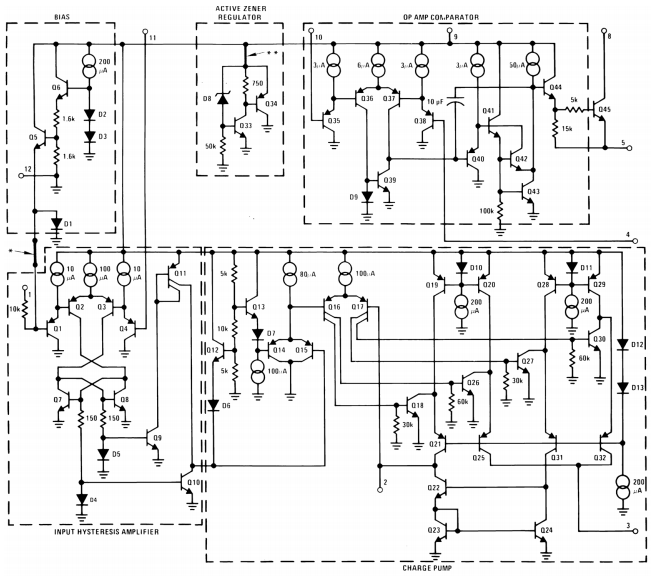
Alternatives to LM2907
|
Part Number |
Description |
Manufacturer |
|
LM2907MEP |
IC VOLTAGE-FREQUENCY CONVERTER, PDSO14, PLASTIC, SOP-14,
Analog Special Function Converter |
Texas Instruments |
|
LM2907MXEP |
IC VOLTAGE-FREQUENCY CONVERTER, PDSO14, PLASTIC, SOP-14,
Analog Special Function Converter |
National Semiconductor Corporation |
|
LM2907D14R |
VOLTAGE-FREQUENCY CONVERTER, PDSO14 |
Texas Instruments |
|
LM2907M/NOPB |
IC VOLTAGE-FREQUENCY CONVERTER, PDSO14, PLASTIC, SOIC-14,
Analog Special Function Converter |
National Semiconductor Corporation |
|
LM2907D14 |
VOLTAGE-FREQUENCY CONVERTER, PDSO14 |
Texas Instruments |
|
LM2907MX/NOPB |
Frequency to Voltage Converter for ground or supply
referred load up to 50-mA; 14-SOIC -40 to 85 |
Texas Instruments |
|
LM2907MX |
Frequency to Voltage Converter for ground or supply
referred load up to 50-mA; 14-SOIC -40 to 85 |
Texas Instruments |
LM2907 Use Cases
Overspeed and Low-Speed Detection
The LM2907 is adept at detecting overspeed and low-speed conditions in industrial machinery. Its precision in measuring varying frequencies can avert mechanical failures by shutting down equipment running at unsafe speeds, thus safeguarding the machinery and enhancing operational reliability. In the automotive world, the LM2907 enhances safety by providing dependable feedback for engine management systems. By monitoring the engine's rotational speed, it ensures the engine operates efficiently across different driving conditions. This not only boosts performance but also prevents engine damage.
Frequency-to-Voltage Conversion (Tachometers)
The LM2907 is celebrated for its role in frequency-to-voltage conversion, mostly in tachometers. In automotive diagnostics, accurate measurement of engine revolutions per minute (RPM) through tachometers is active. The LM2907 facilitates this by converting rotational speed into voltage signals, which helps fine-tune engine parameters for optimal performance. By enabling precise voltage outputs, the LM2907 ensures that tachometers display accurate readings, which is major for both analog and digital instruments.
Speedometers
Speedometers rely on the LM2907 to convert frequency signals from wheel sensors into voltage. This ensures that vehicles display accurate speed, which is useful for adherence to traffic laws and enhancing driver situational awareness. The reliability of the LM2907's conversion process supports its use in traditional analog and modern digital speedometers alike, catering to a variety of vehicle technologies.
Breaker Point Dwell Meters
For vehicles with older ignition systems, the LM2907 plays a notable role in breaker point dwell meters. These meters measure the dwell angle, ensuring the ignition coils are energized correctly. This is insistent for maintaining efficient engine firing and optimal fuel combustion.
Handheld Tachometers
In fields like automotive repair and HVAC systems, handheld tachometers equipped with the LM2907 provide quick and precise rotational speed readings. These portable devices enhance technicians' ability to diagnose and resolve issues efficiently, minimizing downtime.
Governor Cruise Controls
The LM2907's role in governor cruise controls allows for meticulous speed regulation in vehicles. Converting frequency data from the drive system helps maintain consistent speeds, which is mostly beneficial for heavy-duty vehicles and long-distance travel, contributing to fuel efficiency and driving comfort.
Car Door Locks and Clutch Controls
In modernizing car door locks and clutch controls, the LM2907 monitors actuator speeds to ensure synchronized and timely operations. This precision bolsters the reliability and security of these systems, enhancing overall vehicle safety features.
Horn Controls
For horn controls, the LM2907 aids in generating and regulating the horn's frequency. This ensures a consistent and effective audible signal, complying with regulatory standards and providing reliable warning sounds.
Touch or Sound-Activated Switches
The LM2907's ability to convert the frequency of touch or sound impulses into voltage signals is useful for touch or sound-activated switches. This technology enhances the responsiveness and dependability of control systems in areas such as home automation and security, ensuring high sensitivity and accuracy.
Typical Applications
Breaker Points Dwell Meter

Minimal Component Tachometer Configuration

Zener-Regulated Frequency to Voltage Converter
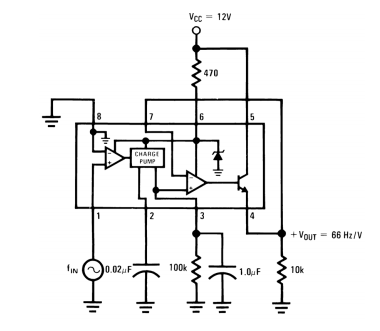
Speed-Switch Circuit
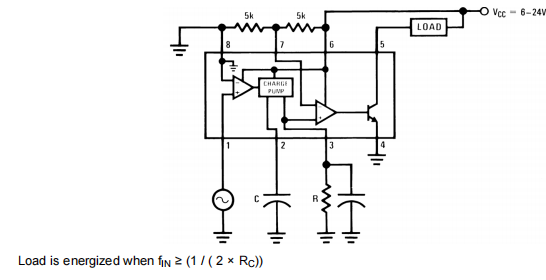
LM2907 Physical Layout
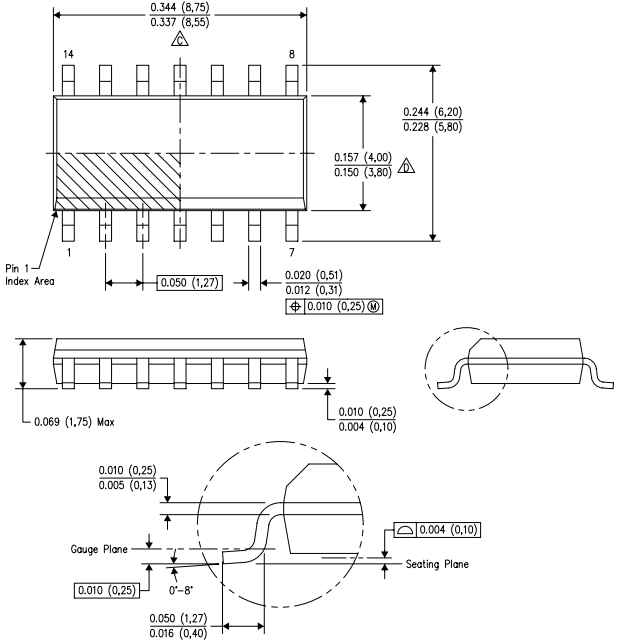
Insights into Texas Instruments (TI)
Texas Instruments (TI) holds a distinguished place as an American semiconductor manufacturer, headquartered in the vibrant city of Dallas, Texas. Celebrated for its relentless innovation and expansive product array, TI designs a broad spectrum of analog and embedded processing chips. Over 80% of its revenue stems from these chips. The applications for these chips span numerous industries including automotive, industrial, and personal electronics.
TI offers more than just analog and embedded processing chips. It is also a trailblazer in digital light processing technology, greatly impacting projectors and digital cinema. Additionally, TI has made notable advancements in educational technology with products such as calculators and microcontrollers. These tools benefit millions of students and professionals involved in STEM fields.
By 2016, TI had secured an impressive 45,000 patents across the globe. This commitment to innovation and continuous improvement situates TI among the top 10 semiconductor companies worldwide by sales, emphasizing its influence in the tech industry. Patents not only protect TI's innovations but also drive ongoing research and development. A considerable portion of TI's triumph is linked to the practical applications of its technology. For example, embedded processing chips play a serious role in the advancement of smart devices, enhancing the Internet of Things (IoT) ecosystem.
About us
ALLELCO LIMITED
Read more
Quick inquiry
Please send an inquiry, we will respond immediately.
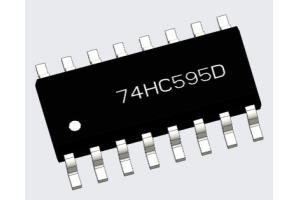
74HC595D Shift Register Breakdown: Pinout, Datasheet, and System Diagram Explained
on October 17th
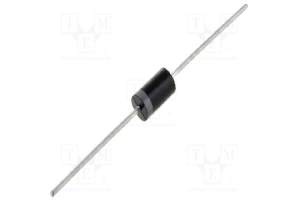
1N5407 Diode: Equivalents, Applications, and Datasheet
on October 17th
Popular Posts
-

What is GND in the circuit?
on January 1th 3272
-

RJ-45 Connector Guide: RJ-45 Connector Color Codes, Wiring Schemes, R-J45 Applications, RJ-45 Datasheets
on January 1th 2815
-

Understanding Power Supply Voltages in Electronics VCC, VDD, VEE, VSS, and GND
on November 20th 2640
-

Fiber Connector Types: SC Vs LC And LC Vs MTP
on January 1th 2265
-

Comparison Between DB9 and RS232
on January 1th 1882
-

What Is An LR44 Battery?
Electricity, that ubiquitous force, quietly permeates every aspect of our daily lives, from trivial gadgets to life-threatening medical equipment, it plays a silent role. However, truly grasping this energy, especially how to store and efficiently output it, is no easy task. It is against this background that this article will focus on a type of coin cell battery that may seem insignificant on the...on January 1th 1846
-

Understanding the Fundamentals:Inductance Resistance, andCapacitance
In the intricate dance of electrical engineering, a trio of fundamental elements takes center stage: inductance, resistance, and capacitance. Each bears unique traits that dictate the dynamic rhythms of electronic circuits. Here, we embark on a journey to decipher the complexities of these components, to uncover their distinct roles and practical uses within the vast electrical orchestra. Inductan...on January 1th 1807
-

What Is RF and Why Do We Use It?
Radio Frequency (RF) technology is a key part of modern wireless communication, enabling data transmission over long distances without physical connections. This article delves into the basics of RF, explaining how electromagnetic radiation (EMR) makes RF communication possible. We will explore the principles of EMR, the creation and control of RF signals, and their wide-ranging uses. The article ...on January 1th 1801
-

CR2430 Battery Comprehensive Guide: Specifications, Applications and Comparison to CR2032 Batteries
What is CR2430 battery ?Benefits of CR2430 BatteriesNormCR2430 Battery ApplicationsCR2430 EquivalentCR2430 VS CR2032Battery CR2430 SizeWhat to look for when buying the CR2430 and equivalentsData Sheet PDFFrequently Asked Questions Batteries are the heart of small electronic devices. Among the many types available, coin cells play a crucial role, commonly found in calculators, remote controls, and ...on January 1th 1799
-

Comprehensive guide to hFE in transistors
Transistors are crucial components in modern electronic devices, enabling signal amplification and control. This article delves into the knowledge surrounding hFE, including how to select a transistor's hFE value, how to find hFE, and the gain of different types of transistors. Through our exploration of hFE, we gain a deeper understanding of how transistors work and their role in electronic circu...on November 20th 1782

